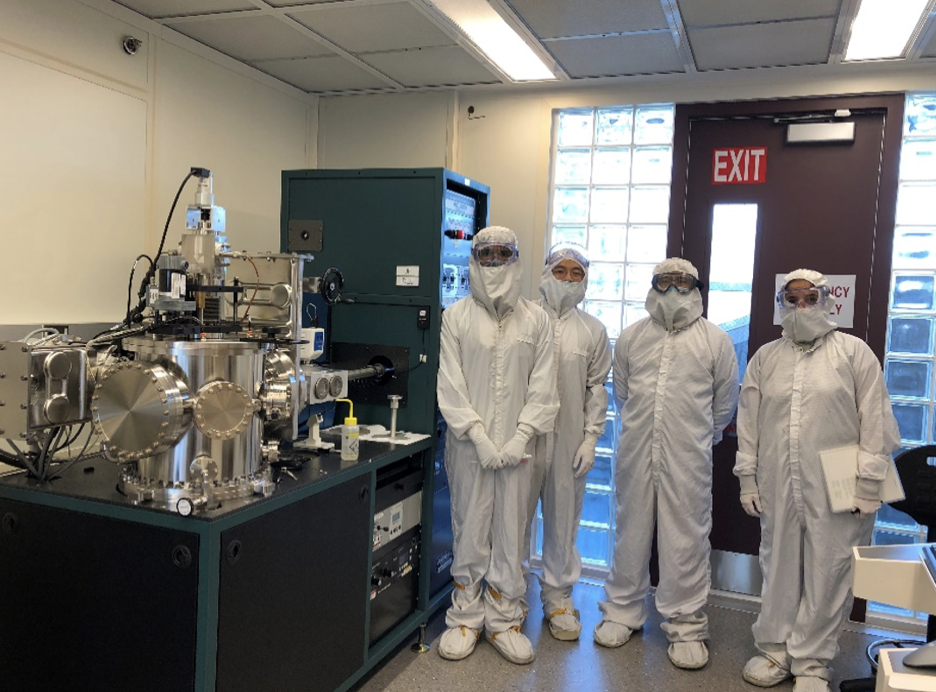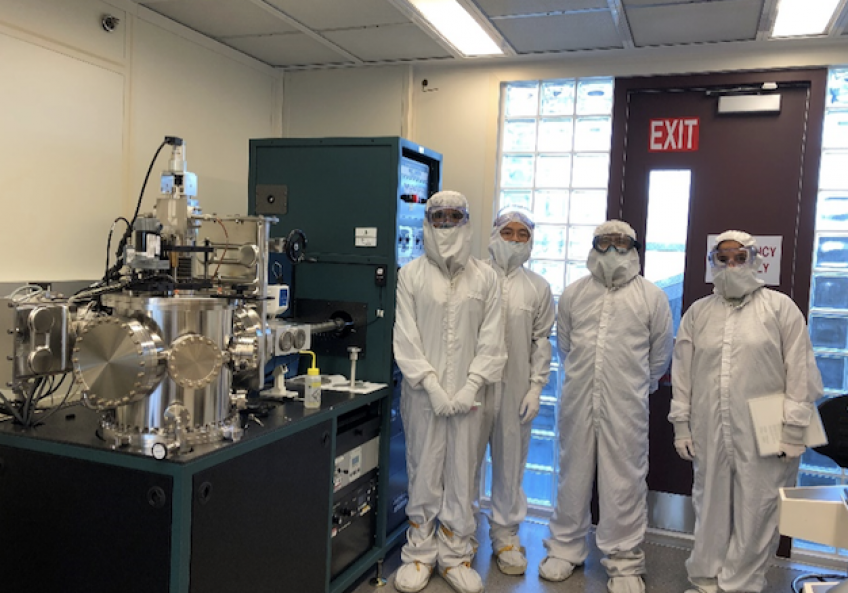Columbus, OH -- The Ohio State University (OSU), in partnership with the University of Dayton (UD) and G&H Ohio, is leading the “Thin-film Crystals for High-speed Optical Modulation” project, funded by the Ohio Federal Research Network’s (OFRN) Round 5 “Sustaining Ohio’s Aeronautical Readiness and Innovation in the Next Generation (SOARING)” Initiative. This project aims to develop optical modulators that operate up to 100 Gigahertz (GHz) at low drive-voltages needed for industrial and defense applications. Developing this capability and establishing a domestic supplier will ensure high-technology jobs are created in Ohio, mitigating U.S. dependence on offshore suppliers.
The ability to modulate light at high frequencies and low drive voltages is an enabling technology across a broad range of commercial and Department of Defense applications. As such, this project has potential to impact both terrestrial- and space-based communication systems and receivers. Optical modulators have been used for several decades to send data over fiber optic cables that form the worlds telecommunications network. For the highest frequency operation, these devices use an electrooptic crystalline material called lithium niobate (LN). Electrooptic crystals experience a change in refractive index in response to a voltage field. The current limits of this technology are dictated by how efficiently a high radio frequency (RF) modulation signal can be made to interact with light traveling through the device. The more the RF signal is intensified where the light is, travels at the same effective speed as the light, and with low optical loss, the better the device can perform.
Ohio State researchers are creating lithium niobate on insulator (LNOI) materials and using them to create high-speed optical modulators. LNOI consists of very thin films of LN on an electrically insulating layer to form a planar lightwave circuit (PLC). Light travels through a PLC in a fashion like an electrical circuit but is guided by tiny ridges formed on the surface of the LNOI. This relatively new structure enables light to be more tightly confined within the LN compared to prior weakly confining waveguide structures.

Dr. David W. Nippa, Research Scientist at The Ohio State University’s ElectroScience Laboratory
One objective of this project is to create a self-sufficient domestic supplier of LNOI. “Right now, researchers are getting thin film crystals from an offshore supplier,” said Dr. David W. Nippa, Research Scientist at The Ohio State University’s ElectroScience Laboratory. “Having a domestic supplier of thin films is strategically important for our country. Ohio State Professor of Electrical and Computer Engineering, Professor Ronald M. Reano has been making these thin films in his laboratory for years, and he has an established process for it. However, it isn't geared for large-scale manufacturing. Our industrial partner G&H Ohio is an international supplier of LN wafers and helping us assess the commercialization potential of this technology. We would like to eventually achieve large-scale manufacturing capabilities of the thin films and commercialize it.”
Large-scale domestic manufacturing of LN thin-film crystals would aid both government and academic researchers in further advancing optical modulator technology and ensuring the material is available.
Another objective of this project is to demonstrate Ohio State’s LNOI in action by creating an optical modulator that operates up to 100 GHz. They are fabricating PLCs with metallic electrodes adjacent to the optical waveguides to efficiently transfer the RF modulation to the optical carrier.
“We need to position the metallic electrodes as close as possible to where the light is but also keep the light away from the metal to minimize optical loss,” said Dr. Nippa. “This, among other important device design criteria, must be taken into consideration. If we do one thing too well (like efficient modulation), we could hurt another thing (like the amount of optical loss). To solve this issue, we're focused on balancing competing operational parameters to create the best modulator possible.”

“Involvement on the project provides students with real-life, hands-on experience in their field.” said Dr. Nippa, and the project has had early success with the devices under development. “We beat our target for performance on the RF electrode design, which is excellent,” said Dr. Nippa. “The students characterized the electrodes up to 65 GHz and will be working toward 100 GHz. They’re currently working on fabricating and characterizing the optical waveguides and integrating them with the RF electrodes.”
The OFRN has been instrumental in facilitating a unique collaboration between The Ohio State University and the University of Dayton–a partnership that has not only made this project possible but also positively impacted research progress for the state and national security needs.
“The University of Dayton has been working with electrooptic crystals in their research for years,” said Dr. Nippa. “They're working on complementary research tasks related to what we're doing at Ohio State. One task involves efficiently getting light in and out of devices created with LNOI. They are also investigating how other electrooptic crystalline materials in the thin-film on insulator configuration could impact LiDAR, space-based communications, and other sensor systems.”
Additionally, OFRN facilitated the project members’ connection with G&H Ohio–a Highland Heights, Ohio-based international company that makes LN and other crystalline materials. According to Dr. Nippa, G&H is assisting the Ohio State-led team assess the market and logistics in creating a domestic supplier of LNOI.
###
About Parallax Advanced Research
Parallax is a 501(c)(3) nonprofit that tackles global challenges by accelerating innovation and developing technology and solutions through strategic partnerships with government, industry, and academia across Ohio and the Nation. Together with academia, Parallax accelerates innovation that leads to breakthroughs. Together with the government, Parallax tackles critical global challenges and delivers new solutions. Together with the industry, Parallax develops groundbreaking ideas and speeds them to market. Parallax now has offices in Cleveland Ohio, Beavercreek, Ohio and Arlington, Virginia.
About OFRN
The OFRN has the mission to stimulate Ohio’s innovation economy by building statewide university-industry research collaborations that meet the requirements of Ohio’s federal laboratories, resulting in the creation of technologies that drive job growth for the State of Ohio. The OFRN is a program managed by Parallax Advanced Research in collaboration with the Ohio State University and is funded by the Ohio Department of Higher Education.



